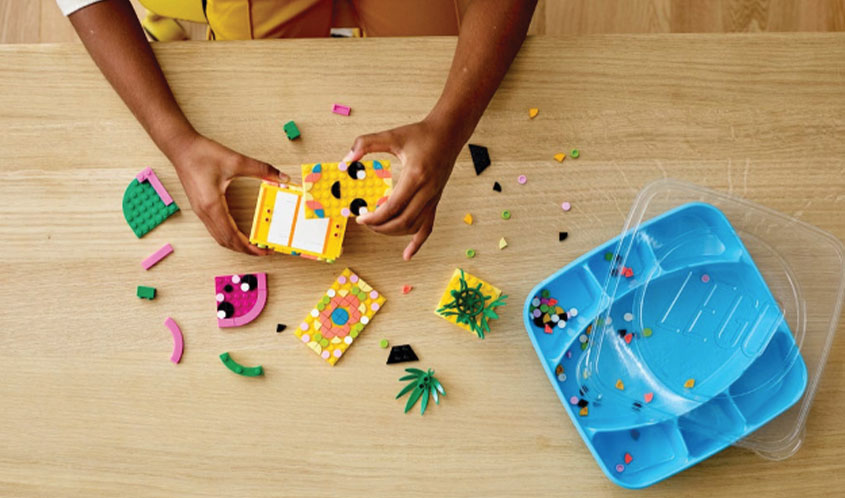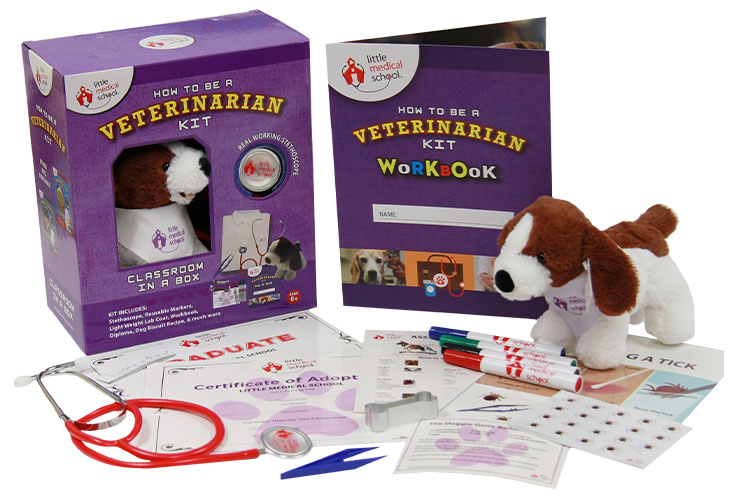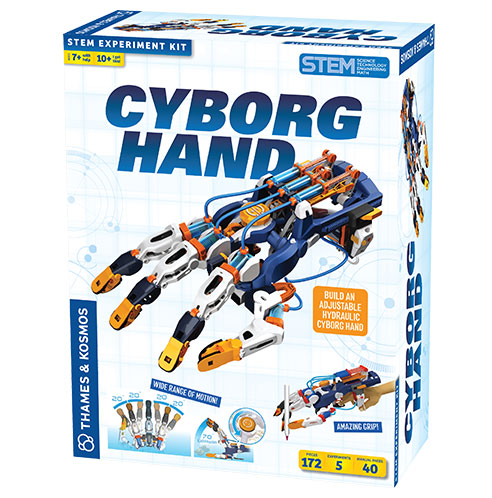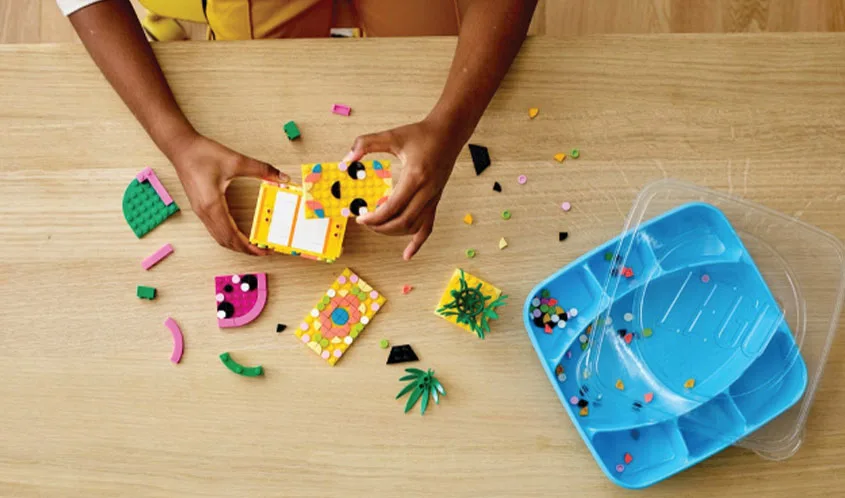
by Wendy Smolen, founder, wendysmolen.com
STEAM learning continues to be an important educational category for kids. Teaching them the skills they’ll need for success in 21st-century careers has been the mantra (and the packaging label) for several years. Many of the jobs for which we are now preparing Generation Z won’t exist by the time they enter the job market, but many new, undefined jobs will. Regardless of the changing world, there will always be a need for certain types of careers.
Dr. Mary Mason, founder of Little Medical School, recognizes this and heads one of several companies that are turning the STEAM toy paradigm inside out by encouraging kids to “play” in a chosen career, experiencing what the field is really about and learning all-important STEAM skills at the same time.
Mason’s mother was a doctor, and she grew up emulating her using her own kid-size white coat and a real stethoscope. Mason went on to major in biomedical engineering before entering medical school. “A lot of STEAM products focus on engineering and coding,” Mason says. “But kids are turned off if
they’re not good at coding.”
The goal of Little Medical School is to inspire kids. Healthcare and STEAM concepts are inseparable, but that shouldn’t be intimidating. By approaching STEAM skills in a role-play situation, Mason believes kids can gain a more well-rounded experience and realize that traditional STEAM careers, such as medical professions, are achievable. Little Medical School includes a variety of educational kits to introduce kids to different medical careers, such as pediatrics, veterinary care, and sports medicine. Each kit comes with an assortment of hands-on educational tools that kids can play with to learn the basic skills and lingo needed for these careers. “When we develop our Little Medical School kits, we have educators and board-certified experts write curriculum,” Mason says. “It’s critical that the information is authentic, yet age-appropriate and fun.”
REAL-WORLD APPLICATIONS
In general, preschool sets have lots of pictures, while products geared toward teens address more sophisticated topics. One of the best-selling products is a veterinarian kit with a plush pet, which comes in two age-appropriate versions.

“Most kids love animals,” Mason says. “Examining them, feeding them, or using tweezers to pick off ticks is a lot of fun, but it also teaches them about empathy and how to care for real pets.”
Thames & Kosmos addresses the science of medicine from a different perspective with its Cyborg Hand kit, which challenges kids to build a prosthetic hand and simultaneously learn about hydraulics.
“Now more than ever we need a scientifically literate population that trusts and understands scientific
findings, as well as creative, passionate, curious kids eager to solve 21st-century problems using all the tools at their disposal,” says Ted McGuire, president of Thames & Kosmos. “By giving kids positive and fun experiences with science and engineering at a young age, we can empower them to grow into adults who can make a difference in the world.”

Medical careers aren’t the only professions that we’re betting will still be around for future generations. Architecture encompasses art and design, as well as math, engineering, sustainability,
technology, history, and ecology.
Damien Murtagh, the brain behind Arckit, created scale-model architecture building kits that are instructional as well as inspirational. “The hands-on building experience combines logic and reasoning with play and imagination,” he says. “Kids gain practical skills while learning
what works in given environments.”
True to form, the click-and-connect pieces are made with recycled plastic and cardboard. The new Living Series places different shaped pieces on the coast, mountains, and desert that kids can build, while the new Go Eco kit introduces passive house design. Each piece added to the model brings scale and storytelling into the play, inspiring a well-rounded experience that goes beyond instructional building.
Speaking of architecture, LEGO also encourages prescribed and free-form building through its landmark Architecture Skyline Collection, with this year’s offerings adding iconic buildings from
Dubai and Tokyo. These sophisticated models for hard-to-please teenagers focus on structure, art, and history. On the other end of the engineering spectrum, LEGO Dots, one of the company’s newest product lines, brings the less-technical builder into the art world using tiny, mosaic-like tiles that click onto LEGO bases to create custom jewelry and accessories.
Similar to the medical and engineering professions, meteorology isn’t going anywhere, especially as the world grapples with climate change. Kids can make clouds, test for acid rain, measure wind speed, and track weather patterns with SmartLab Toys’ Storm Watcher Weather Lab. Likewise, Green Science’s Weather Station Kit contains a functional wind vane, an anemometer, a thermometer, and a rain gauge. With VTech’s high-definition KidiZoom Creator Cam, which features basic editing capabilities, kids can report on their meteorology findings in front of a green screen.
Naturally, the camera isn’t limited to weather reporting. Using technology to record and create personal stories is a favorite activity of the TikTok generation. At the University of Southern California, social media content creation is now considered a future career path, with classes focused on influencer relations being offered in the Annenberg School for Communication and Journalism.
Toy manufacturers are also continuing to freshen up offerings for future chefs. Raddish Cooking Club is a kids’ subscription service that includes recipes, tools, techniques, grocery lists, and table talkers to engage kids ages 4 and up in art, science, and the fun of cooking. On a (literally) smaller scale, kids bake diminutive pies, cakes, and pizzas using extremely small tools and pans with SmartLab Toys’ Tiny Baking! kit. As they mathematically recalibrate recipes and measurements, kids learn the science behind why cakes rise, why eggs get solid, and why cookies smell so good.
By looking at STEAM from a role-play perspective, imagination and innovation can work in tandem.
This article was originally published in the June 2020 issue of the Toy Book. Click here to read the full issue!


